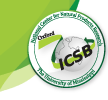Document Type
Oral Presentation
Location
Oxford Convention Center, 102 Ed Perry Boulevard Oxford, MS 38655
Event Website
https://oxfordicsb.org/
Start Date
15-4-2024 1:00 PM
End Date
15-4-2024 1:15 PM
Description
One-class modeling based on soft independent modeling of class analogy (SIMCA) is a simple but powerful method for comparing the chemical composition of botanical materials using non-targeted chromatograms (GC, LC) or spectra (IR, MS, NIR, NMR). The methodology is available on any commercial chemometric platform. Authentication is based solely on the characteristics of the botanical material of interest. Detection of adulteration is determined for each variable and requires no identification of adulterants. Some highly characterized botanical reference materials (BRMs) may account for species, cultivar, and year and location of harvest while more generic BRMs may have minimal characterization. All of these factors can result in variability in the chemical composition that may lead to statistically significant differences when applying one-class modeling. Using flow injection mass spectrometry (FIMS), principal component analysis (PCA), and factorial multivariate analysis of variance (factorial mANOVA), statistically significant (95% confidence limit) differences in chemical composition were found between 4 sources of A. racemosa BRMs and between Actaea species. Interestingly, the variability of 6% of the mass variables were found to be quantitatively conserved (variability of
Recommended Citation
Harnly, James, "One-class modeling for the authentication of Actaea racemosa and evaluation of the variation between botanical reference materials" (2024). Oxford ICSB. 3.
https://egrove.olemiss.edu/icsb/2024_ICSB/Schedule/3
Publication Date
April 2024
Accessibility Status
Searchable text
Included in
One-class modeling for the authentication of Actaea racemosa and evaluation of the variation between botanical reference materials
Oxford Convention Center, 102 Ed Perry Boulevard Oxford, MS 38655
One-class modeling based on soft independent modeling of class analogy (SIMCA) is a simple but powerful method for comparing the chemical composition of botanical materials using non-targeted chromatograms (GC, LC) or spectra (IR, MS, NIR, NMR). The methodology is available on any commercial chemometric platform. Authentication is based solely on the characteristics of the botanical material of interest. Detection of adulteration is determined for each variable and requires no identification of adulterants. Some highly characterized botanical reference materials (BRMs) may account for species, cultivar, and year and location of harvest while more generic BRMs may have minimal characterization. All of these factors can result in variability in the chemical composition that may lead to statistically significant differences when applying one-class modeling. Using flow injection mass spectrometry (FIMS), principal component analysis (PCA), and factorial multivariate analysis of variance (factorial mANOVA), statistically significant (95% confidence limit) differences in chemical composition were found between 4 sources of A. racemosa BRMs and between Actaea species. Interestingly, the variability of 6% of the mass variables were found to be quantitatively conserved (variability of
https://egrove.olemiss.edu/icsb/2024_ICSB/Schedule/3



Comments
Supported by an Interagency Agreement with the Office of Dietary Supplements, National Institutes of Health.